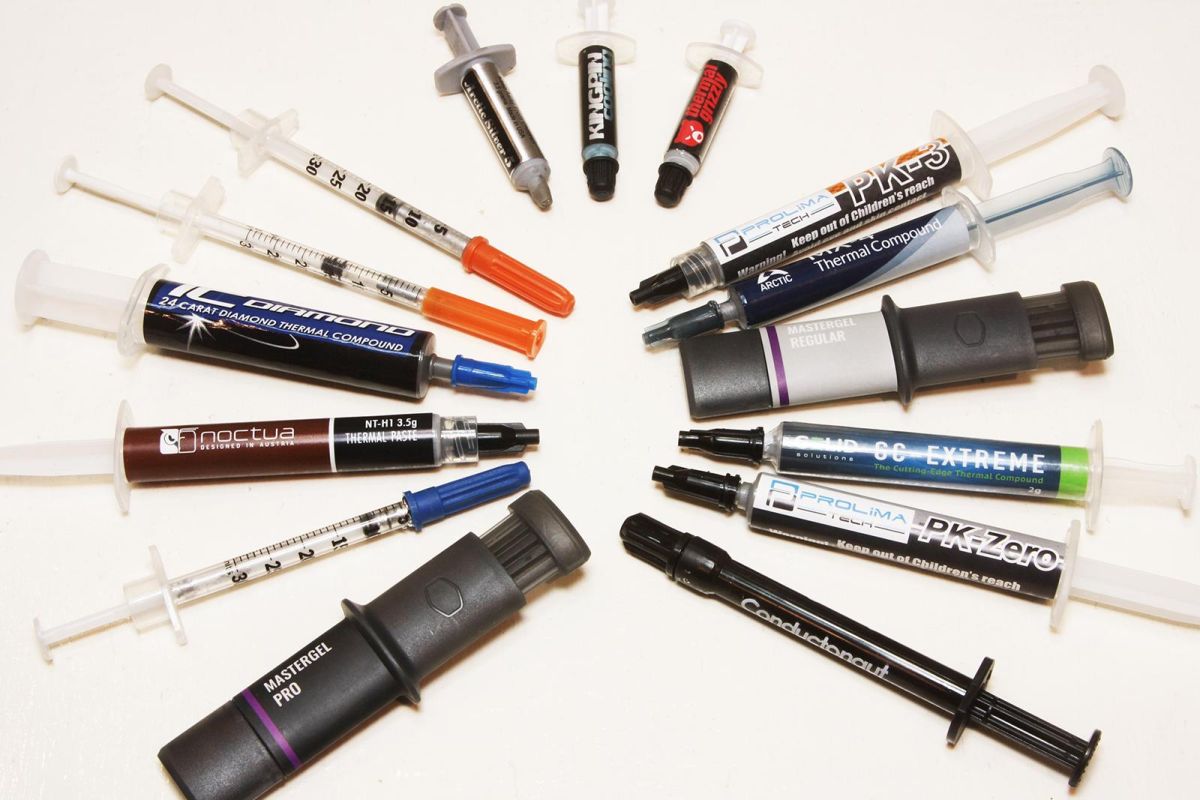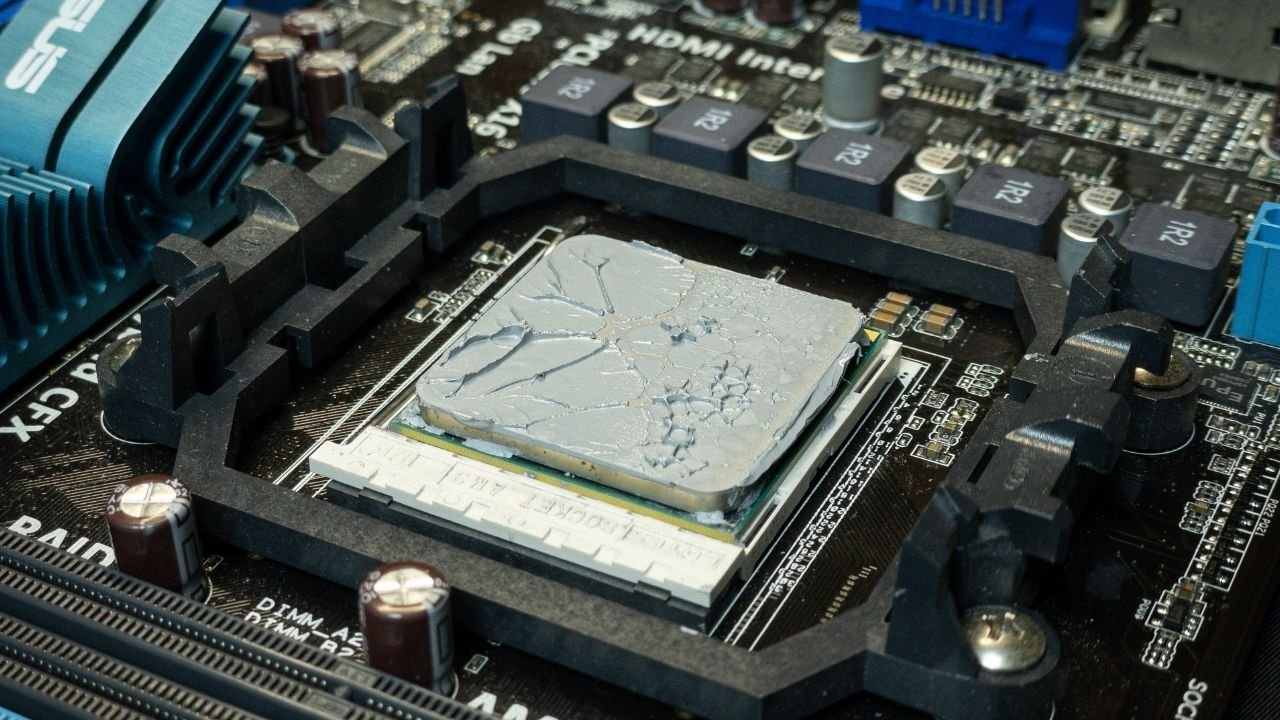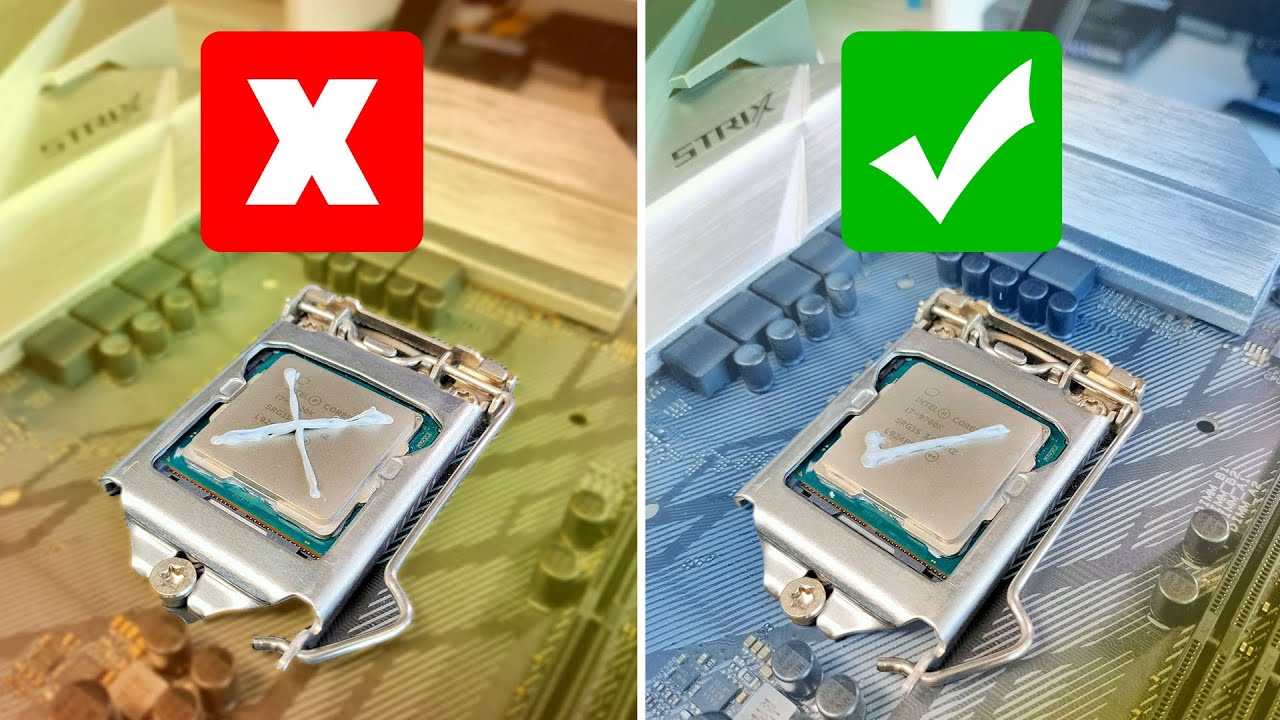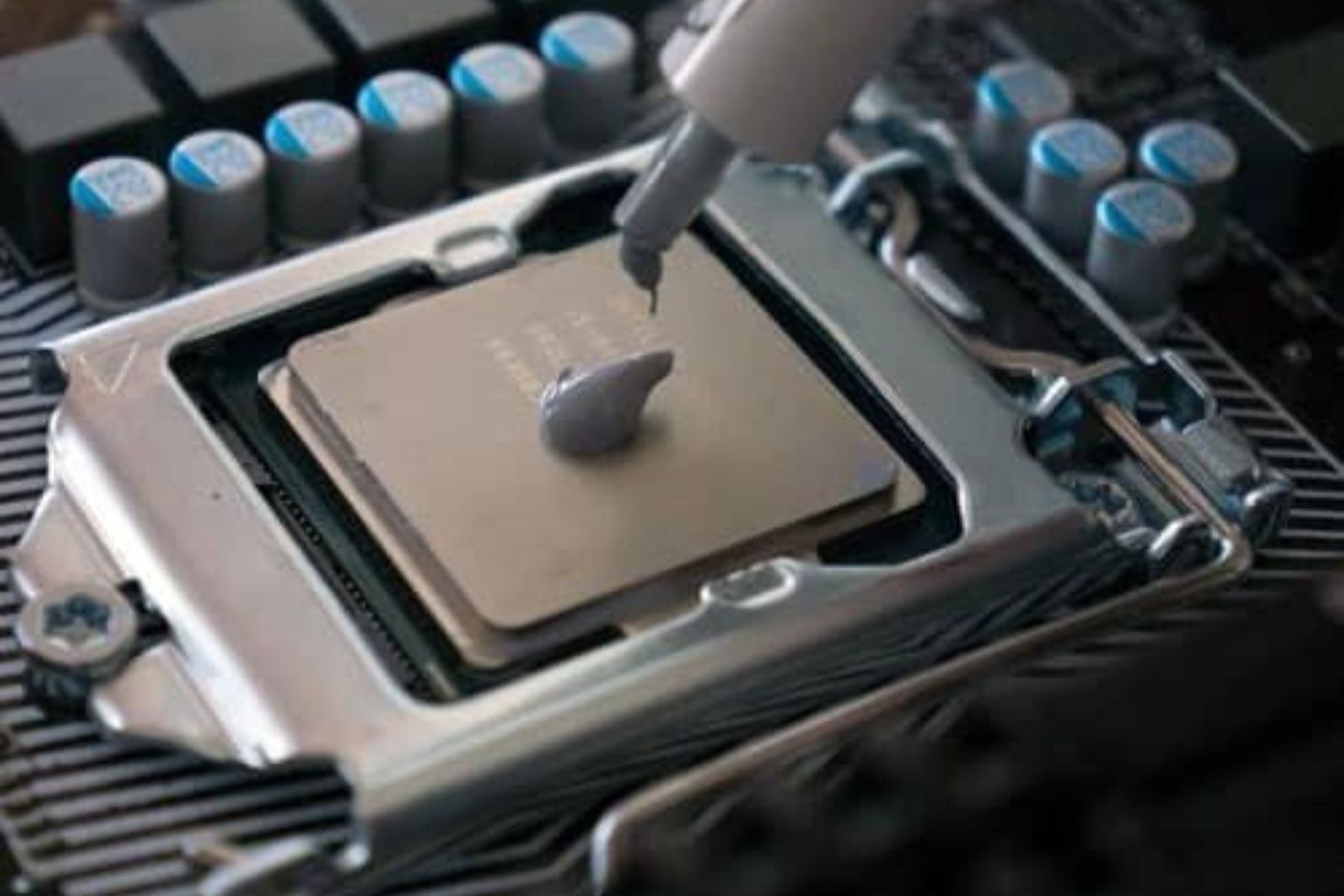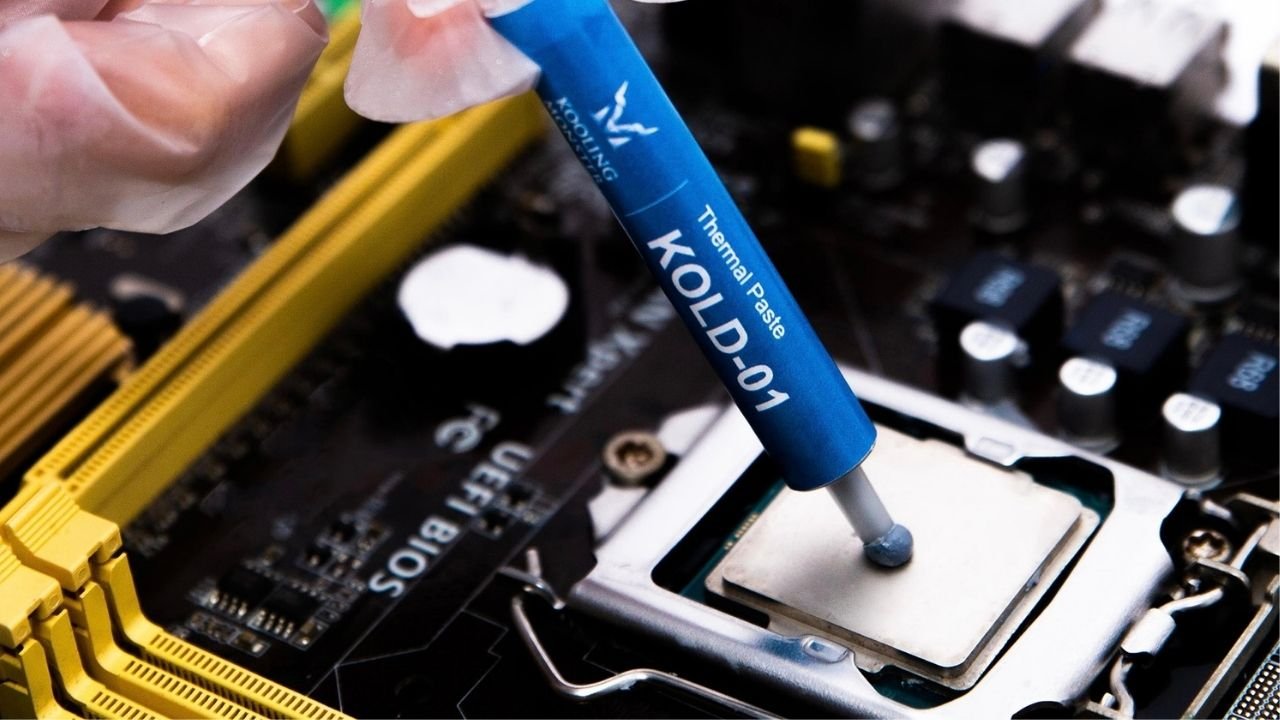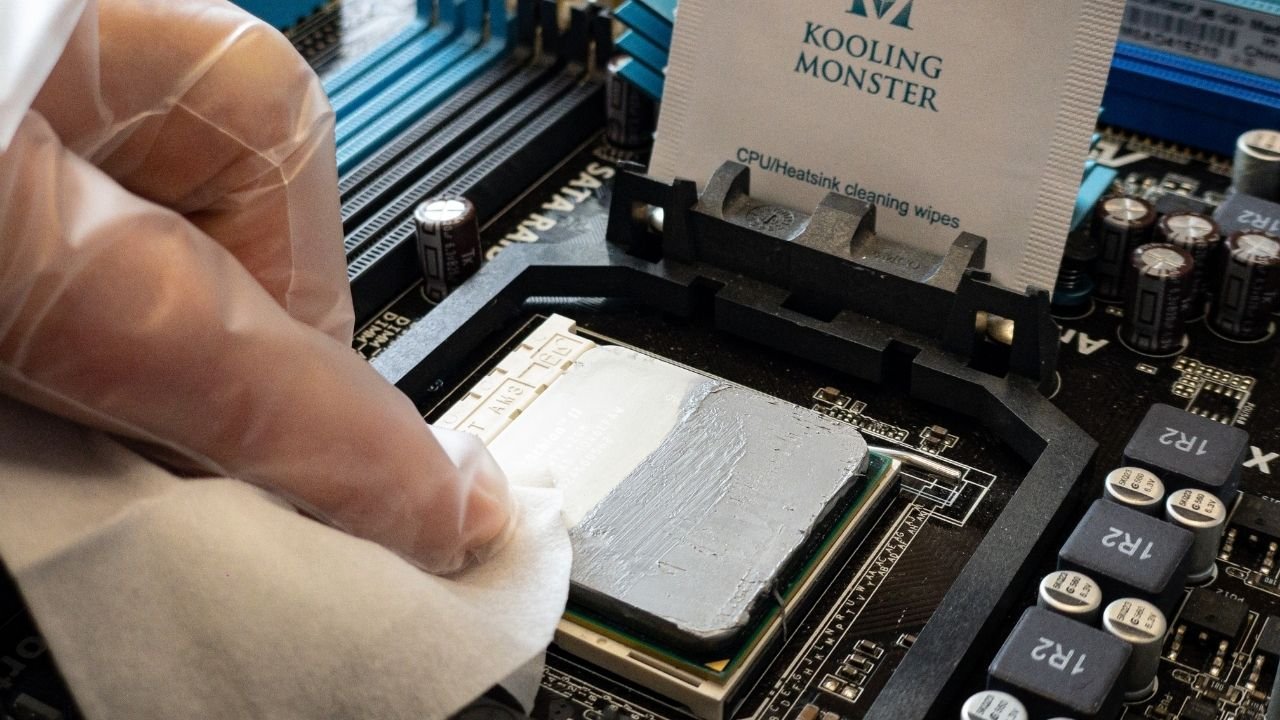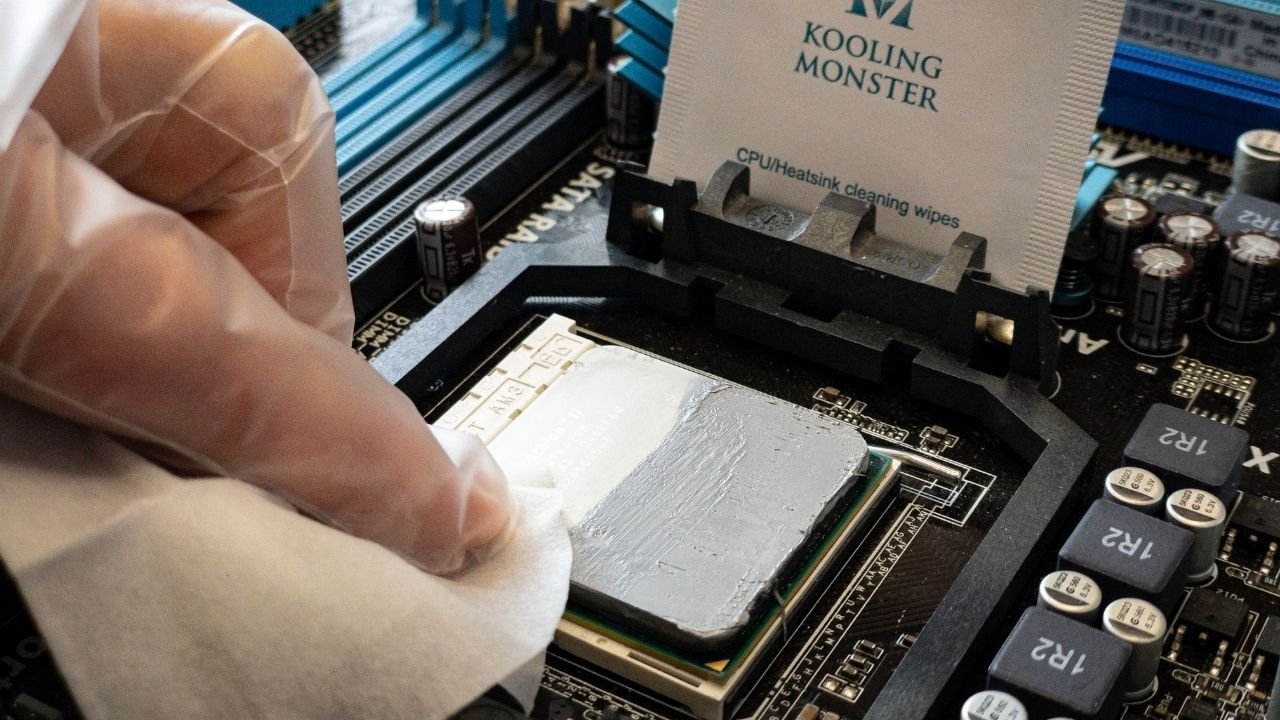Introduction
When it comes to the performance and longevity of your CPU, thermal paste plays a crucial role. But what exactly is thermal paste and why is it so important? In this article, we will delve into the world of thermal paste, explore its significance for CPUs, and guide you on choosing the right thermal paste for your needs.
Thermal paste, also known as thermal compound or thermal grease, is a heat-conductive substance that is applied between the CPU and the heat sink. Its primary purpose is to fill in the microscopic gaps and imperfections on the surfaces of the CPU and the heat sink, allowing for efficient heat transfer.
One might wonder why such a small component like thermal paste matters in the performance of a CPU. Well, CPUs generate a significant amount of heat during operation. If this heat is not properly dissipated, it can lead to overheating, which can result in reduced performance, system instability, or even permanent damage to the CPU.
By using thermal paste, you create a continuous and efficient thermal interface between the CPU and the heat sink. This ensures that heat is effectively transferred away from the CPU and dissipated into the surrounding air. In essence, thermal paste acts as a bridge between the two surfaces, maximizing heat transfer and preventing hot spots on the CPU.
When it comes to choosing the right thermal paste for your CPU, there are several factors to consider. The thermal conductivity, ease of application, curing time, and longevity are some of the key aspects to weigh. Additionally, the type of CPU, the intended usage, and your budget will also influence your decision.
In the following sections, we will explore the different types of thermal paste available on the market, highlighting their characteristics and suitability for various scenarios. We will also provide tips on correctly applying thermal paste and offer advice on maintaining its effectiveness over time. So whether you’re a casual user or an avid overclocker, join us on this thermal paste journey to ensure optimal CPU performance and temperature management.
What is thermal paste?
Thermal paste, also known as thermal compound or thermal grease, is a heat-conductive substance that is used to improve heat transfer between the CPU and the heat sink. It is typically made up of a mixture of materials, such as silicone compounds, metal oxides, and ceramic particles.
The primary function of thermal paste is to fill in the microscopic imperfections and air gaps that exist between the CPU and the heat sink. These imperfections can inhibit the transfer of heat and create thermal resistance, leading to inefficient cooling and potential overheating.
Thermal paste acts as a conduit between the CPU and the heat sink, ensuring a better contact surface area and promoting the transfer of heat. It is designed to have high thermal conductivity, which allows heat to flow more easily from the CPU to the heat sink.
Additionally, thermal paste can also help to mitigate temperature fluctuations by providing a more stable thermal interface. This is important because differences in thermal expansion between the CPU and the heat sink can cause micro-gaps to develop over time, further hindering heat transfer. The thermal paste fills in these gaps and maintains a consistent contact, reducing the risk of hot spots and temperature spikes on the CPU.
It’s worth noting that thermal paste should not be applied in excessive amounts. The goal is to achieve a thin and even layer of thermal paste, as using too much can actually impede heat transfer by increasing the thermal resistance. On the other hand, using too little thermal paste can result in incomplete coverage and reduced cooling efficiency.
Overall, thermal paste is a crucial component for ensuring the optimal performance and longevity of your CPU. By facilitating efficient heat transfer and minimizing thermal resistance, it helps to maintain lower temperatures, enhance system stability, and extend the lifespan of your CPU.
Why is thermal paste important for CPUs?
Thermal paste plays a vital role in maintaining the temperature and performance of CPUs. Here are a few reasons why thermal paste is important:
- Heat Dissipation: CPUs generate a significant amount of heat during operation. If this heat is not effectively dissipated, it can lead to overheating, which can cause system instability, reduced performance, and ultimately, permanent damage to the CPU. Thermal paste acts as a medium between the CPU and the heat sink, facilitating efficient heat transfer and preventing overheating.
- Filling Imperfections: The surfaces of both the CPU and the heat sink may have microscopic imperfections, such as scratches or irregularities. These imperfections can create air gaps, leading to a reduced contact area between the CPU and the heat sink. Thermal paste fills in these gaps, allowing for better thermal conductivity and eliminating air pockets that could hinder heat transfer.
- Reducing Hot Spots: Uneven contact between the CPU and the heat sink can result in localized hot spots on the CPU surface. These hot spots can lead to thermal throttling, which is a mechanism used by CPUs to limit their performance in order to control temperature. Thermal paste helps to create a more even distribution of heat, minimizing hot spots and ensuring consistent performance of the CPU.
- Longevity and Reliability: By maintaining optimal operating temperatures, thermal paste helps to extend the lifespan of the CPU. Excessive heat can cause degradation of the CPU over time, leading to reduced performance and potential failure. By providing efficient heat dissipation, thermal paste contributes to the overall reliability and longevity of the CPU.
- Compatibility: Different CPUs and heat sinks may have varying surfaces, materials, and designs. Thermal paste helps to bridge the compatibility gap between different components by providing a uniform interface. It allows for effective heat transfer regardless of the specific CPU and heat sink combination.
In summary, thermal paste is an essential component for maintaining optimal CPU performance and preventing overheating. Its role in facilitating efficient heat dissipation, filling imperfections, reducing hot spots, ensuring longevity, and ensuring compatibility between components cannot be overstated. Choosing a high-quality thermal paste and applying it correctly is crucial to maximize CPU cooling and ensure the smooth operation of your system.
Factors to consider when choosing thermal paste
When selecting thermal paste for your CPU, it’s important to consider several factors to ensure optimal cooling performance and longevity. Here are some key factors to keep in mind:
- Thermal Conductivity: The thermal conductivity of the paste determines how well it conducts heat. Higher thermal conductivity values are generally preferable as they allow for more efficient heat transfer between the CPU and the heat sink. Look for thermal pastes with high thermal conductivity ratings for better cooling performance.
- Viscosity: The viscosity of the thermal paste affects its ease of application. A paste with low viscosity is easier to spread evenly and ensures better coverage on the CPU surface. On the other hand, pastes with high viscosity may require extra effort to distribute evenly, potentially leading to air gaps and lower cooling performance.
- Curing Time: Some thermal pastes require a curing or settling period after application. During this time, the paste may go through a phase where its thermal conductivity improves. It’s important to consider the curing time if you need immediate cooling results or plan to perform any CPU-intensive tasks soon after applying the paste.
- Longevity: Consider the longevity of the thermal paste you choose. Some pastes may dry out or degrade over time, which can reduce their effectiveness in heat transfer. Look for thermal pastes that offer long-lasting performance and stability to ensure continued cooling efficiency.
- Compatibility: Ensure that the thermal paste is compatible with your CPU and heatsink. Some thermal pastes may interact negatively with certain materials, causing corrosion or other issues. Check the manufacturer’s specifications and recommendations to ensure compatibility with your specific CPU and heatsink.
- Application Method: Different thermal pastes may have specific application methods, such as whether to use a dot, line, or spread the paste. Consider the application method that best suits your needs and skill level. Remember that the goal is to achieve a thin, even layer of thermal paste for optimal heat transfer.
- Price: While the price shouldn’t be the sole determining factor, it’s important to consider your budget when choosing thermal paste. There are a wide range of options available, from budget-friendly choices to higher-end options with advanced features. Assess your needs and select a paste that provides a balance of performance and affordability.
By taking these factors into account, you can make an informed decision and select a thermal paste that meets your specific requirements for cooling performance, ease of application, longevity, and budget constraints. Remember, the right thermal paste can significantly improve the cooling efficiency of your CPU and contribute to its overall performance and longevity.
Different types of thermal paste
There are several types of thermal paste available on the market, each offering different characteristics and performance. Understanding the different types can help you choose the most suitable thermal paste for your CPU cooling needs. Here are some common types:
- Silicone-based: Silicone-based thermal paste is the most common type and is often budget-friendly. It has good thermal conductivity and is easy to apply. However, it tends to have a higher viscosity and can dry out over time, requiring reapplication.
- Metal-based: Metal-based thermal pastes, such as those containing silver or copper particles, offer higher thermal conductivity than silicone-based pastes. They are ideal for CPUs that generate a lot of heat, such as those used in overclocking or high-performance systems. However, they can be electrically conductive and should be applied with care to prevent short circuits.
- Ceramic-based: Ceramic-based thermal pastes are non-conductive and offer good thermal conductivity. They are often used in situations where electrical conductivity needs to be avoided, such as when applying thermal paste near sensitive components or on multi-chip modules (MCMs).
- Carbon-based: Carbon-based thermal pastes are another non-conductive option that offers good thermal performance. They are often used in low-power CPUs or scenarios where electrical isolation is necessary. Carbon-based pastes may have a longer curing time compared to other types.
- Diamond-based: Diamond-based thermal pastes are relatively rare and expensive. They offer exceptional thermal conductivity due to the high thermal conductivity of diamond particles. These pastes are typically used in extreme cases where the utmost cooling performance is required.
- Thermal pads: Thermal pads are an alternative to thermal paste, typically made from a solid material with pre-applied thermal compound on one or both sides. They are convenient to use and offer consistent thickness, but their heat transfer capability is usually lower than that of thermal paste.
It’s important to consider the specific requirements of your CPU, such as the heat generated and the usage scenario, when choosing a type of thermal paste. High-performance CPUs or heavy overclocking may benefit from metal-based or diamond-based pastes, while standard usage scenarios can work well with silicone-based or ceramic-based types. Additionally, consider any electrical conductivity concerns or application restrictions based on your specific CPU model.
Remember, the effectiveness of thermal paste depends not only on the type chosen but also on proper application and ensuring a thin, uniform layer. Follow the manufacturer’s instructions and guidelines for the specific type of thermal paste you choose to ensure optimal heat transfer and CPU cooling efficiency.
Popular thermal pastes on the market
With a wide range of options available, it can be overwhelming to choose the right thermal paste for your CPU. To help you make an informed decision, here are some popular thermal pastes that have gained recognition and positive reviews among users:
- Arctic MX-4: Arctic MX-4 is a well-regarded thermal paste known for its high thermal conductivity and long-lasting performance. It is easy to apply, offers excellent heat transfer characteristics, and is non-conductive. MX-4 is widely recommended for both novice and experienced users.
- Noctua NT-H1: Noctua NT-H1 is a highly-rated thermal paste trusted by many enthusiasts. It delivers excellent thermal performance, low thermal resistance, and long-term stability. NT-H1 is known for its ease of application and compatibility with a variety of CPUs and heatsinks.
- Thermal Grizzly Kryonaut: Thermal Grizzly Kryonaut is a premium thermal paste that boasts impressive thermal conductivity and low thermal resistance. It is commonly used by overclockers and enthusiasts who demand top-notch cooling performance. Kryonaut is known for its durability and thermal stability under high temperatures.
- Cooler Master MasterGel Maker: Cooler Master MasterGel Maker is a high-performance thermal paste designed for enthusiasts and overclockers. It offers exceptional thermal conductivity, easy application, and long-term reliability. MasterGel Maker provides good coverage and is often praised for its effectiveness in maintaining low CPU temperatures.
- Arctic Silver 5: Arctic Silver 5 has been a popular choice among PC builders for many years. It offers good thermal conductivity, is easy to apply, and has a long-established reputation for its reliability. Arctic Silver 5 is often considered a go-to option for budget-conscious users.
- Thermalright TF8: Thermalright TF8 is a high-quality thermal paste that offers excellent thermal conductivity and low thermal impedance. It is known for its long-lasting performance, ease of application, and compatibility with a wide range of CPUs and heatsinks.
These are just a few examples of popular thermal pastes available on the market. Remember that the choice of thermal paste depends on various factors, including your specific CPU, usage scenario, and budget. It’s always a good idea to read reviews, consider expert opinions, and select a thermal paste that aligns with your cooling requirements.
Regardless of the thermal paste you choose, it’s essential to follow the manufacturer’s instructions for proper application to ensure optimal heat transfer and cooling performance for your CPU.
How to apply thermal paste correctly
Proper application of thermal paste is crucial to ensure optimal heat transfer between the CPU and the heat sink. Follow these steps to apply thermal paste correctly:
- Clean the surfaces: Before applying thermal paste, ensure both the CPU and the heat sink are clean. Use isopropyl alcohol and a lint-free cloth or cotton swab to remove any existing thermal paste or debris.
- Choose the application method: Different thermal pastes may have different recommended application methods, such as applying a small dot or line in the center of the CPU. Check the manufacturer’s instructions for the specific paste you are using for their recommended application method.
- Apply thermal paste: Using the chosen method, apply a small amount of thermal paste to the center of the CPU. The amount should be about the size of a pea, or a thin line, depending on the method you’re using.
- Distribute the paste: Gently place the heat sink onto the CPU, applying even and gentle pressure. This will help spread the thermal paste across the CPU surface and fill in any imperfections. Be careful not to apply too much pressure, as it can cause the paste to overflow.
- Secure the heat sink: Once the heat sink is in place, secure it firmly according to the manufacturer’s instructions. This ensures proper contact between the CPU and the heat sink, promoting efficient heat transfer.
- Check for coverage: After securing the heat sink, check for complete coverage of the CPU surface. Make sure the thermal paste has spread evenly, leaving no gaps or air pockets. If necessary, gently remove the heat sink and adjust the thermal paste placement to ensure adequate coverage.
Remember, the goal is to achieve a thin and even layer of thermal paste that fills any gaps between the CPU and the heat sink. A thin layer of thermal paste ensures efficient heat transfer while avoiding excessive application that can hinder cooling performance.
It’s important to note that some thermal pastes may require a curing period, during which their thermal conductivity may improve. Refer to the manufacturer’s instructions to determine if any specific curing time is needed before the CPU reaches optimal thermal performance.
By following these steps and being mindful of the manufacturer’s guidelines, you can ensure proper application of thermal paste and maximize the cooling efficiency of your CPU.
Tips for maintaining thermal paste
Once you have correctly applied thermal paste to your CPU, it’s important to maintain its effectiveness over time. Here are some tips to help you maintain your thermal paste and ensure optimal cooling performance:
- Monitor CPU temperatures: Keep an eye on your CPU temperatures regularly using monitoring software. This will help you detect any sudden changes or unusual spikes in temperature that may indicate a degradation in the thermal paste’s performance.
- Keep the system clean: Dust and debris can accumulate on the CPU and heat sink over time, affecting the efficiency of the thermal paste. Regularly clean the system using compressed air or a soft brush to remove any dust or particles that may hinder heat transfer.
- Reapply when necessary: Thermal paste can dry out, become less effective, or degrade over time. If you notice a significant increase in CPU temperatures or experience issues with system stability, consider reapplying the thermal paste to ensure optimum cooling performance.
- Don’t mix different thermal pastes: Avoid mixing different types or brands of thermal paste. Mixing different types may lead to unpredictable chemical reactions, and some pastes may not be compatible with each other, potentially compromising heat conductivity or causing damage to the CPU.
- Avoid excessive application: Using too much thermal paste can impede heat transfer and hinder cooling efficiency. Stick to the recommended amount provided by the manufacturer to ensure effective coverage without excess paste overflowing from the edges of the CPU.
- Avoid excessive pressure: Apply reasonable pressure when securing the heat sink, but be cautious not to apply excessive force. Excessive pressure can cause the thermal paste to spread too thin or even ooze out from the edges, compromising proper thermal conductivity.
- Follow manufacturer’s recommendations: Different thermal pastes may have specific instructions for application, reapplication, and maintenance. Always refer to the manufacturer’s guidelines and recommendations to ensure the best results and longevity of the thermal paste.
By following these tips, you can maintain the effectiveness of your thermal paste and ensure that your CPU stays cool and performs optimally. Proper maintenance of the thermal paste will contribute to the longevity of your CPU and help prevent issues related to overheating and reduced performance.
Conclusion
Thermal paste plays a crucial role in maintaining optimal CPU temperatures and ensuring efficient heat dissipation. By filling imperfections and creating a seamless thermal interface between the CPU and the heat sink, thermal paste promotes effective heat transfer, reduces hot spots, and enhances the performance and longevity of your CPU.
When choosing a thermal paste, consider factors such as thermal conductivity, viscosity, longevity, and compatibility with your CPU and heat sink. Popular thermal paste options like Arctic MX-4, Noctua NT-H1, and Thermal Grizzly Kryonaut have proven to be reliable choices with excellent heat transfer performance.
Applying thermal paste correctly is equally important. Clean the surfaces, apply the right amount using the recommended method, and ensure even coverage to maximize heat transfer. Regularly monitor CPU temperatures and maintain a clean system to prevent dust buildup that can impede thermal performance.
If you notice a significant increase in CPU temperature or encounter stability issues, consider reapplying the thermal paste. Additionally, avoid mixing different types of thermal paste and follow the manufacturer’s recommendations for maintenance and reapplication.
By following these guidelines, you can optimize the cooling performance of your CPU and ensure its long-term health and reliability. Whether you’re a casual user or an enthusiastic overclocker, taking care of your thermal paste is a small but significant aspect of maintaining a well-functioning and cool-running CPU.







